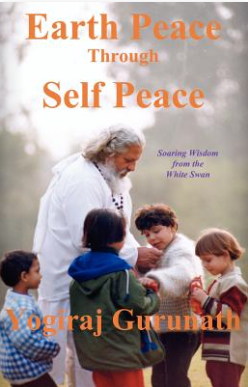MINDFULNESS BLOG/HEATH BLOG/KINDNESS BLOG/TEAMWORK BLOG
The Up Deeds blog
Our blog posts are created by those that share the same call to give back to others.
We give them the full credit they are due, and links so you can benefit from other information they share.

Bridging Divides Through Self-Understanding and Peace
By Up Deeds
In an increasingly polarized world, the urgent need to bridge divides between people, cultures, and ideals has never been more apparent. Research suggests that the foundation for connection and harmony lies in better understanding ourselves and fostering inner peace. This article explores the evidence supporting the link between personal peace and broader societal harmony, the steps individuals can take to achieve personal peace, and how that peace can ripple out to impact communities and society as a whole.
Research and Evidence
Numerous studies highlight the connection between individual well-being and social cohesion. Psychological research indicates that people who experience higher levels of personal well-being are more likely to engage in prosocial behaviors, such as altruism and community service. For instance, a study published in the *Journal of Happiness Studies* found that individuals who report higher levels of life satisfaction are more likely to contribute positively to their communities.
Additionally, research by social scientists, including the work of psychologist Dr. Martin Seligman, emphasizes that cultivating a sense of well-being can lead to greater empathy and understanding among individuals from diverse backgrounds. Seligman's studies on positive psychology underline that individuals who achieve personal peace are often more tolerant and open-minded, enabling them to better bridge divides with others.
Steps to Finding Personal Peace
1. Self-Reflection: The journey to inner peace begins with self-reflection. Taking time to understand one's values, beliefs, and emotional triggers is crucial. Journaling, meditation, and mindfulness practices can foster greater self-awareness.
2. Emotional Regulation: Learning to manage emotions is essential. Techniques such as deep breathing, yoga, and cognitive-behavioral strategies can help individuals respond to stress and conflict more constructively.
3. Cultivating Gratitude: Studies show that practicing gratitude can significantly enhance well-being. By focusing on what they are thankful for, individuals can shift their mindset from scarcity to abundance, fostering a peaceful outlook.
4. Building Connections: Engaging in meaningful relationships and communities is key. Taking the initiative to connect with different cultures and perspectives broadens understanding and can lead to a sense of belonging and peace.
Expanding Peace to Communities and Society
Once individuals find their personal peace, the next step is to expand that peace into their communities and society at large:
1. Educational Initiatives: Organizing workshops and seminars that promote self-awareness, emotional intelligence, and cultural understanding can create spaces for dialogue and learning.
2. Community Service: Engaging in community service or advocacy work allows individuals to contribute positively to their surroundings. Projects that encourage collaboration among diverse groups foster shared goals and understanding.
3. Peer Support Networks: Establishing support groups where individuals can share their experiences and challenges can help create a culture of empathy. These networks can enhance community bonds and promote collective peace.
4. Policy Advocacy: Individuals, when united in their quest for peace, can influence policy changes. Advocating for policies that promote social justice, equality, and access to mental health resources contributes to a more harmonious society.
5. Promoting Cultural Exchange: Encouraging cultural events, exchanges, and discussions can deepen mutual understanding and appreciation among different cultural groups, paving the way for collective peace.
Conclusion
Bridging divides between individuals and cultures starts with understanding ourselves and fostering inner peace. Supporting research illustrates the vital connection between personal well-being and social harmony. By taking steps towards self-awareness and emotional regulation, individuals can cultivate peace in their lives. This peace can then be expanded to communities and society through education, service, and advocacy, creating a ripple effect of understanding and connection across broader populations. As we learn to embrace our shared humanity, the path to a more peaceful world becomes clearer.
Another blog on The Power Understanding and Listening you may enjoy.


